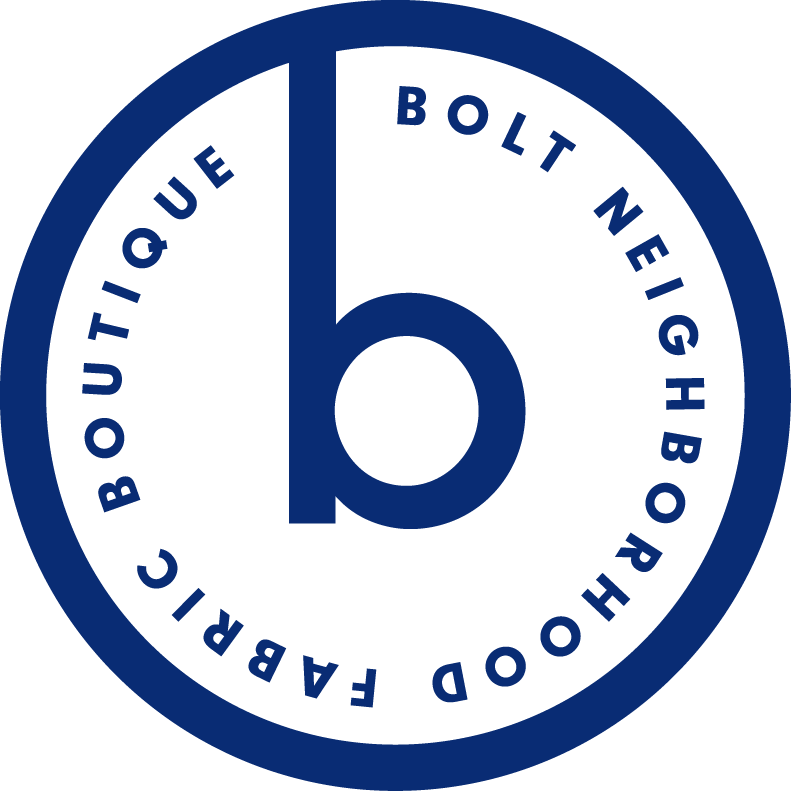Double Needles Demystified
Sally Hess does it again. If you'd like her to drop some knowledge on you in person, make sure to check out the MD class list to see what she's teaching next.
There are a
lot of great uses for double needles, also called twin needles. They come in a
confusing array of sizes and shapes, so hopefully this will help sort things
out so that you can use them with confidence and ease!
The first
thing to know is that a double needle will fit in your sewing machine just like
a regular needle does. The two needles are held together with a horizontal
plastic bar, on top of which is an ordinary needle shank.

Double
needles are sized according to the distance (in millimeters) between the
needles and the size of the needles. You will need the needle size to
correspond to your thread thickness and your fabric. Choose a Universal 75 or
80 for regular sewing and choose a 90 or 100 for sewing on thick fabrics. The
distance between the needles can be as little as 1.8 mm or as big as 8.0mm.
Most machines can only handle a maximum width 6.0mm.
It is best
to check your sewing machine manual for threading directions when you are using
a double needle. If you aren’t able to find your manual, thread your machine as
you usually do with the first thread. Then thread the machine the same way with
the second thread. You may have a special spool pin that you will have to use
to hold the second spool of thread. Here you can see that I’ve wound a bobbin
to use as my second spool of thread.

If your
machine has threading options, where you can put the thread on either the left
side or the right side of a thread guide, be consistent and choose the left
side for the first thread and the right side for the second thread. This is
especially important if you plan to use thick threads, such as decorative
threads or top stitching threads.
Here I am
sliding one thread on each side of the metal plate that separates the tension
discs. I will have more consistent tension if the threads are not both crammed
on one side of the tension discs.

two threads between my fingers and pull them through the thread guides at the
same time, so they don’t twist on each other.

And lastly,
I thread the left hand thread into the left needle and the right hand thread
into the right needle, being careful not to let either thread twist around the
tips of the needles or form loops with each other.

machine is threaded, you are ready to sew. The first thing you will do is set
your machine to straight stitch! Most double needles are too wide to zig-zag
and if you machine is set that way, the needle will come down on the presser
foot and break.
Always sew
a test piece before you sew your project, to be sure that the tension is
properly set for your desired look.
PINTUCKS
With a
narrow Universal double needle (size 1.8/80), I can either sew decorative lines
on linen or I can sew pintucks in lightweight cotton. The difference is in the
tension. If you tighten the tension on your machine, you will create pintucks
between the two rows of stitches.

The back of
the samples show how the bobbin thread creates a zig-zag as it catches the
threads from both needles.
A fantastic
way to give your hand sewn
t-shirts a professional looking hem! Because the bobbin thread catches both
needles and creates a zig-zag stitch on the back of the fabric, hems sewn with
a double needle will have the stretch they need and look great. My favorite
double needle for hemming knit fabrics is the Jersey Ball Point 4.0/75. It has
the rounded tip that all Ball Point needles have, to ensure the knit fibers
don’t get a snag or a run. With a distance of 4.0mm, the hem will lie flat and
not look pintucked. And since I use a size 70 or size 80 needle on all my knit
projects, size 75 is a perfect compromise.
Instantly
take your garment sewing to the next level with double needle topstitching.
Using an “Extra-Wide Twin Needle” in size 6.0/100, I can topstitch my jeans.
The needle is specifically made for jeans/denim, which is shown on the packaging.
This means that it is stronger and sharper than a Universal needle and has a
larger eye for the thick thread. A double needle topstitch also can be used on
the inseam of pants to flatten the seam allowance for a comfortable finish on
the inside.
Double
needles can also be used to sew on narrow ribbon, trim or elastic. You can also
sew some decorative stitches with narrow double needles. Be sure to test each
stitch by slowly lowering the needle with the hand wheel, to be certain the
stitch width won’t cause one of the needles to hit the presser foot.



